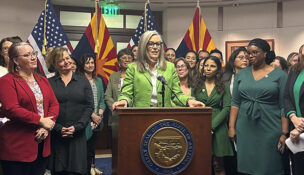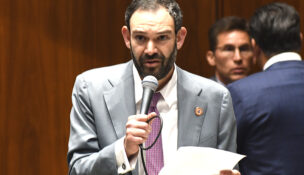Intrigue boosted 1892 RNC in Minneapolis
Arizona Capitol Reports Staff//August 29, 2008//[read_meter]
Intrigue boosted 1892 RNC in Minneapolis
Arizona Capitol Reports Staff//August 29, 2008//[read_meter]
Convention Comic • In this cartoon, from the 1892 Republican National Convention in Minneapolis, the banner says “We’ve Got It – National Republican Convention.” Among the sunshine-faced characters’ feet it...
No tags for this post.

















